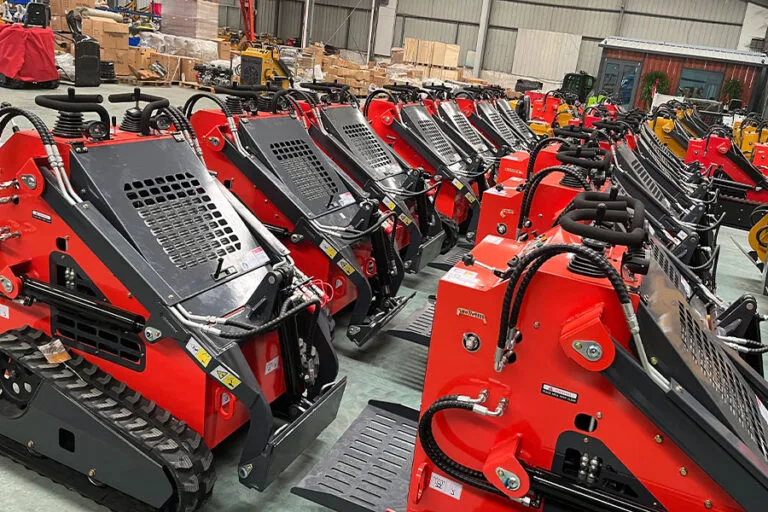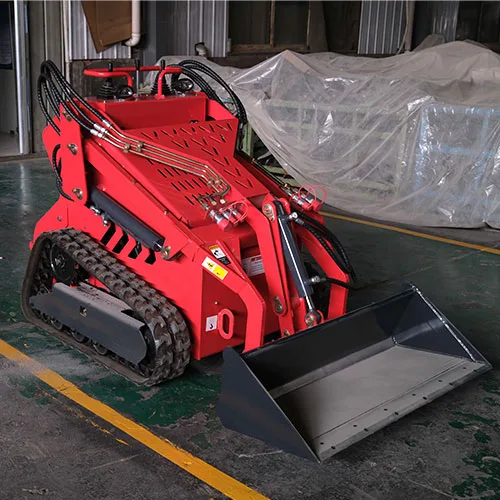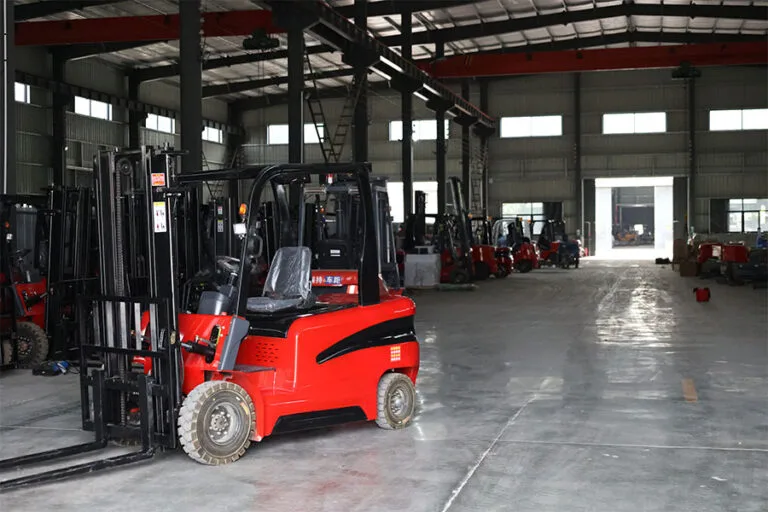I’m thrilled to have you here! Before we dive into the content, let’s stay connected. Join me on my social media platforms for more insights, community engagement, and regular updates. Here’s where you can find me:
📌 Facebook: Shandong Huaying International Trade Co., Ltd.
Now, let’s embark on this journey together. I hope you find the content here not only insightful and engaging but also valuable to your interests. Let’s learn, grow, and connect!
Table of Contents
Introduction

In today’s competitive construction and landscaping industries, efficiency, precision, and safety are more important than ever. One machine that continues to attract the attention of experienced operators is the all wheel steer skid loader. Unlike traditional skid steer models, the all wheel steer variant brings a host of advantages that directly impact job performance, cost-efficiency, and operator satisfaction. This article explores six compelling reasons why smart operators consistently choose the all wheel steer skid loader for their projects.
This equipment isn’t just another loader. It’s an innovation that blends maneuverability with power while preserving job site surfaces and enhancing productivity. Whether it’s urban construction, agriculture, or snow removal, this versatile machine proves its worth in a wide range of applications. Let’s dive into the six core reasons behind its rising popularity.
Enhanced Maneuverability in Tight Spaces
One of the defining features of an all wheel steer skid loader is its superior maneuverability, especially in environments where space is limited or precision is crucial. Unlike conventional skid steer loaders that rely on skidding to turn—often leaving ruts or scuffs on the ground—the all wheel steer system allows each wheel to rotate independently, enabling fluid, controlled motion.
This design dramatically improves handling in compact or obstacle-heavy settings such as:
- Urban development sites with tight alleyways and limited staging areas
- Residential or commercial landscaping where preserving turf or pavers is essential
- Warehouses or indoor factories where accurate turning reduces the risk of product or infrastructure damage
In these applications, the all wheel steer loader shines by ensuring maximum mobility without sacrificing the integrity of the job site. Its smooth steering also helps reduce operator fatigue and enhances job site safety by limiting sudden jerks or unanticipated wheel lockups. but also keeps the surface cleaner and safer.
Improved Tire Longevity and Lower Maintenance Costs

Tire replacement is one of the recurring costs in loader operation. Traditional skid loaders are known for high tire Tire wear is a significant maintenance concern and operating expense for equipment owners. Traditional skid steer loaders often cause excessive friction between tires and the surface during turns, leading to accelerated tire degradation. In contrast, the all wheel steer skid loader’s non-skidding movement pattern greatly reduces wear and tear.
The benefits are tangible:
- Extended tire lifespan, which means fewer replacements per year
- Less frequent downtime, improving overall machine availability
- Lower operating costs, freeing up budget for other maintenance priorities
Moreover, because the all wheel steer system reduces mechanical stress on drivetrain and hydraulic components, operators also benefit from:
- Longer-lasting hydraulic lines and pumps
- Reduced axle and joint failures
- Less time in the shop and more time on the job site
For operations that rely heavily on equipment availability—such as municipal services, large-scale construction, or seasonal agriculture—these savings quickly add up and enhance the return on investment.
Increased Versatility Across Job Types
An all wheel steer skid loader is highly adaptable. It can switch between skid steer and all wheel steer modes in some models, allowing users to enjoy the best of both worlds. This dual-functionality enhances versatility and expands the range of applications.
This loader is commonly used in:
- Road construction, where surface preservation and precise pathing are required
- Agriculture, such as feed handling or barn cleanup, where tight maneuvering is a daily need
- Snow management, especially in urban zones where gentle turning prevents sidewalk and pavement damage
- Demolition work, where balance and controlled movement are vital in high-debris environments
Additionally, the machine supports a wide selection of attachments:
- Buckets for digging and leveling
- Trenchers for underground utility work
- Augers for fence post installation
- Snowblowers and brooms for seasonal cleanup
Smart operators know that one machine capable of performing multiple roles reduces capital investment and enhances job site productivity.
Operator Comfort and Safety Features

Productivity and safety go hand in hand—and equipment design plays a central role. All wheel steer skid loaders typically offer enhanced cabin environments focused on user ergonomics, visibility, and protection.
Key comfort features often include:
- Adjustable, shock-absorbing seating to reduce spinal fatigue
- Climate control systems for year-round usability
- Noise-reducing insulation, allowing clearer communication and less operator stress
Safety features are just as comprehensive:
- ROPS (Rollover Protective Structures) protect operators in the event of tip-overs
- FOPS (Falling Object Protective Structures) shield against overhead hazards
- Backup cameras and motion alarms improve awareness in congested areas
- LED lighting systems extend safe operation into nighttime or low-light conditions
For contractors with tight deadlines or long shifts, these features can make a difference between an exhausted, error-prone operator and one who stays sharp, safe, and productive all day long.
Superior Traction and Stability on Uneven Terrain
Uneven or muddy terrain can challenge even the most skilled operators. The all wheel steer skid loader provides enhanced traction thanks to its four-wheel drive system. By distributing weight and torque more evenly, it offers better balance and prevents slippage.
Whether navigating slopes or soft ground, this loader delivers:
- Better ground contact
- Reduced risk of tipping
- Smoother rides for operators
This stability translates to greater productivity and fewer delays. In high-risk environments such as mining sites or flood recovery zones, stability can make all the difference.
Table: All Wheel Steer vs. Traditional Skid Loaders
| Feature | All Wheel Steer Skid Loader | Traditional Skid Steer Loader |
|---|---|---|
| Maneuverability | Excellent in tight spaces | Good but causes surface wear |
| Tire Longevity | High | Low due to skidding |
| Operator Comfort | High | Moderate |
| Traction on Rough Terrain | Superior | Moderate |
| Maintenance Costs | Lower | Higher |
| Versatility with Attachments | Very high | High |
Environmental and Surface Protection

Traditional skid steer loaders, while effective in many settings, are notorious for damaging the surfaces they operate on. Their differential steering system relies on skidding, which often results in torn-up lawns, unsightly ruts in soft soil, and even cracked concrete or asphalt. These surface disruptions are more than aesthetic issues—they can lead to costly repairs, customer complaints, and project delays.
The all wheel steer skid loader offers a well-engineered solution to this problem. By utilizing coordinated steering on all four wheels, the machine moves smoothly without dragging tires or creating excessive pressure on a single point. This turf-friendly motion preserves surface integrity and minimizes ground disturbance.
This feature is especially valuable in areas that demand both precision and gentleness, such as:
- Residential landscaping, where homeowners expect pristine lawns and clean finishes
- Public parks and golf courses, which require heavy-duty work with zero surface disruption
- Historical restoration sites, where preserving infrastructure is as important as the job itself
- Hospitals, schools, and office campuses, where aesthetics and safety go hand in hand
Additionally, using an all wheel steer skid loader can help companies and municipalities meet increasing environmental regulations and community expectations. Fewer damaged surfaces mean:
- Less soil erosion and runoff pollution
- Reduced need for chemical treatments or surface repair
- Improved project sustainability and green compliance
In today’s environmentally conscious world, reducing impact is more than just a public relations bonus—it’s a strategic responsibility. Operators and project managers who choose equipment that safeguards the natural and built environment position themselves as forward-thinking professionals committed to long-term ecological stewardship. With an all wheel steer skid loader, environmental protection doesn’t mean sacrificing performance—it means achieving more, while doing less harm.
Conclusion
Choosing the right equipment can significantly influence project success. The all wheel steer skid loader offers tangible advantages in performance, efficiency, and sustainability. Its maneuverability, tire life, job site versatility, and safety features make it a preferred choice among experienced professionals.
Smart operators recognize that up-front investment in superior technology yields long-term returns. The all wheel steer skid loader is not just a tool—it’s a strategic asset that adapts to modern worksite demands.
If you’re looking to enhance productivity while reducing wear, waste, and downtime, this machine is worth serious consideration.
FAQ
What makes an all wheel steer skid loader different?
It uses all four wheels to steer rather than skidding, which reduces tire wear and improves control.
Is an all wheel steer skid loader suitable for residential use?
Yes, it’s ideal for residential landscaping and other surface-sensitive projects due to minimal ground disturbance.
Can attachments from a standard skid steer be used?
In most cases, yes. The machine is compatible with various industry-standard attachments.
Does it require special training to operate?
While it’s user-friendly, proper training is recommended to maximize safety and performance.
How does it contribute to sustainability?
By reducing tire waste, fuel consumption, and surface damage, it supports eco-friendly job site practices.



